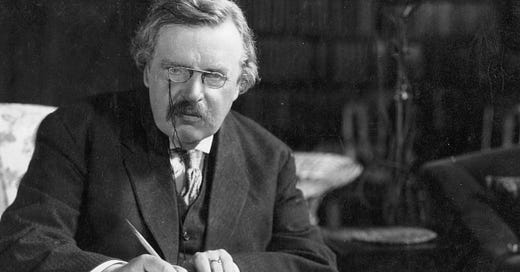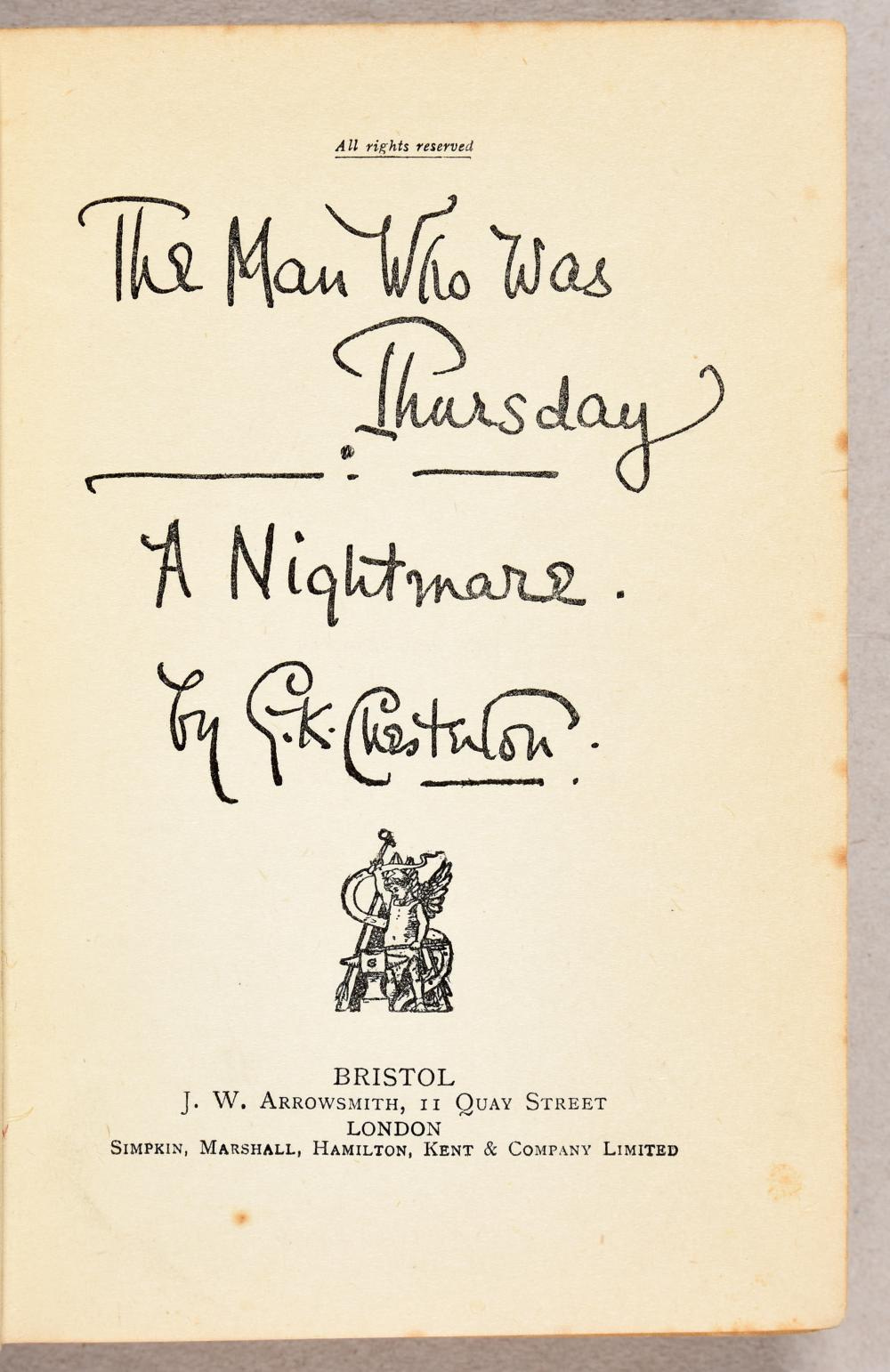This series is drawn from a talk I gave at this year’s Chesterton Conference in Minneapolis. I’m hoping to share more pieces like this for my Substack subscribers in addition to This Week’s Miscellany and weekly Jane Austen reflections. If you’re not a subscriber it’s a great time to subscribe because…
For the month of September, get 20% off a paid subscription to this Substack for the next 12 months!
As a Catholic writer of fiction and as an editor, a significant portion of my waking hours are spent thinking about story, the power of storytelling, and the role of a writer within the framework of my faith. Lately I’ve been reading a collection of Katherine Paterson’s essays and talks on children’s literature.1 She’s very interested in the connection between faith and art and she says,
“The word reveals the creator–and as our universe in its vastness, its orderliness, its exquisite detail, tells us something of the One who made it, so a work of fiction, for better or worse, will reveal the writer.”
What does Chesterton’s detective fiction reveal about him?
My first introduction to Chesterton was The Man Who Was Thursday. I was in high school and I don’t know what made me pick up that strange book. But my first taste of Chesterton was this unhinged detective nightmare. I find myself coming back to this wild and disorienting reading experience again and again–sometimes I’m still not sure I really understand it. But certain passages have stuck with me, haunting me for two decades.
In the story [SPOILERS AHEAD] we meet Lucian Gregory, a poet who is also an anarchist. He meets Gabriel Syme, a poet who is also an undercover policeman. Not knowing that his new acquaintance is a law man, Lucian Gregory plans to introduce Gabriel Syme into what he believes to be the inner circle of the European anarchist movement. But as Syme infiltrates this circle of anarchist leaders, he discovers that all of the anarchists are also undercover policeman who also think they are spying on dangerous anarchists. It’s a wild ride. But Gregory and Syme conversation about poetry at the beginning of the book is my favorite part:
Gregory, the anarchist, says,
“The poet delights in disorder only … Why do all the clerks and navvies in the railway trains look so sad and tired, so very sad and tired? I will tell you. It is because they know that the train is going right. It is because they know that whatever place they have taken a ticket for that place they will reach. It is because after they have passed Sloane Square they know that the next station must be Victoria, and nothing but Victoria. Oh, their wild rapture! oh, their eyes like stars and their souls again in Eden, if the next station were unaccountably Baker Street!”
“It is you who are unpoetical,” replied the poet Syme. “If what you say of clerks is true, they can only be as prosaic as your poetry. The rare, strange thing is to hit the mark; the gross, obvious thing is to miss it … Chaos is dull; because in chaos the train might indeed go anywhere, to Baker Street or to Baghdad. But man is a magician, and his whole magic is in this, that he does say Victoria, and lo! it is Victoria. No, take your books of mere poetry and prose; let me read a time table, with tears of pride … every time a train comes in I feel that it has broken past batteries of besiegers, and that man has won a battle against chaos.”
So which poet is right? Is disorder poetic or is order poetic? We have an obvious nudge from Chesterton as to which poet we should listen to: Gabriel, the same name as the angel who announces the coming of Christ to Mary, or Lucian–so similar to Lucifer, the fallen angel, whose refusal to serve unleashes the chaos of sin. Which angel is telling the truth?
There is a belief in contemporary culture that order is boring and uninspired, and that a little chaos is where true art is found. Order is a limitation on our freedom of creativity. But Chesterton challenges this claim. And other writers and artists who are worth their salt do, too. I love what Katherine Paterson says about creativity:
“There is no such thing as unlimited creativity. It is within limits, often very narrow limits, that a creative work comes into being…”
She makes a joke about Shakespeare saying, “William, don’t you find fourteen tightly rhymed lines an absolute prison?...Form is not a bar to true expression, but the boundaries within which writers and artists freely choose to work.”
Or as Orson Welles put it, “The enemy of art is the absence of limitations.” Or as Chesterton himself said, “Art consists of limitation. The most beautiful part of every picture is the frame.”
Without the “limits” of order, we can’t make art at all–it’s the form that allows the art to be cultivated. Order is a necessity to art, including poetry.
And it’s that order, not chaos, that leads us to experience wonder. A jumble of letters does not make a story. It’s when they’re ordered into words and sentences and paragraphs that they come to life. Otherwise, they are just a dull pile of letters. We must simply look at a snowflake under a miscroscope to remind us that order is enough to bring one to tears. Order is a catalyst for wonder.
My secondborn child was born with the tiniest little divet in her ear. I asked the pediatrician about it at her first checkup and he said, “Not to worry, it’s just one tiny spot that didn’t develop properly in utero. Isn’t it incredible,” he continued, “that so many things go right? Isn’t it miraculous?” It is miraculous. As Gabriel Syme said, “The rare, strange thing is to hit the mark; the gross, obvious thing is to miss it.” There is wonder in order.
So I want to explore this idea of order as awe-inspiring and chaos as dull through the medium of a genre that Chesterton was very devoted to: his detective mysteries. In a way, these mysteries do what Gabriel Syme describes when the train goes right: they are about winning a battle against chaos. And the detective is the warrior fighting the battle.
To be continued….
If you enjoyed this post, please share it. And if you find this Substack valuable, please consider upgrading to a paid subscription.
Katherine Paterson grew up in a missionary family and wrote some of the most famous middle grade books of my childhood including The Bridge to Terabithia and Jacob Have I Loved. Her talks on children’s literature are in a collection titled The Invisible Child.






Very thought provoking! I’ve been trying so hard to get myself back into the habit of writing (starting with Substack) and I found what has worked so far is, in fact, limitation-limiting myself to reflecting on one quote I kept in my commonplace notebook. Also if you know The Literary Life podcast by Angelina Stanford they just did The Man Who was Thursday-highly recommend!
As a classically trained musician I love this conversation. So much of what is beautiful is because of, not in spite of, the form. And even within modern music, even at its most chaotic, there is STILL a form and limits. (I have played pieces where the instructions were “pluck any string for X duration of time” and I think they could have used a little more structure 😆). What is the difference between a 4 year old playing “music” on the piano and an actual song? It’s the form and limits. You have to know the rules in order to break them thoughtfully. I think people think they’re being innovative sometimes when instead they’re showing they don’t understand or respect what they’re trying to deviate from...